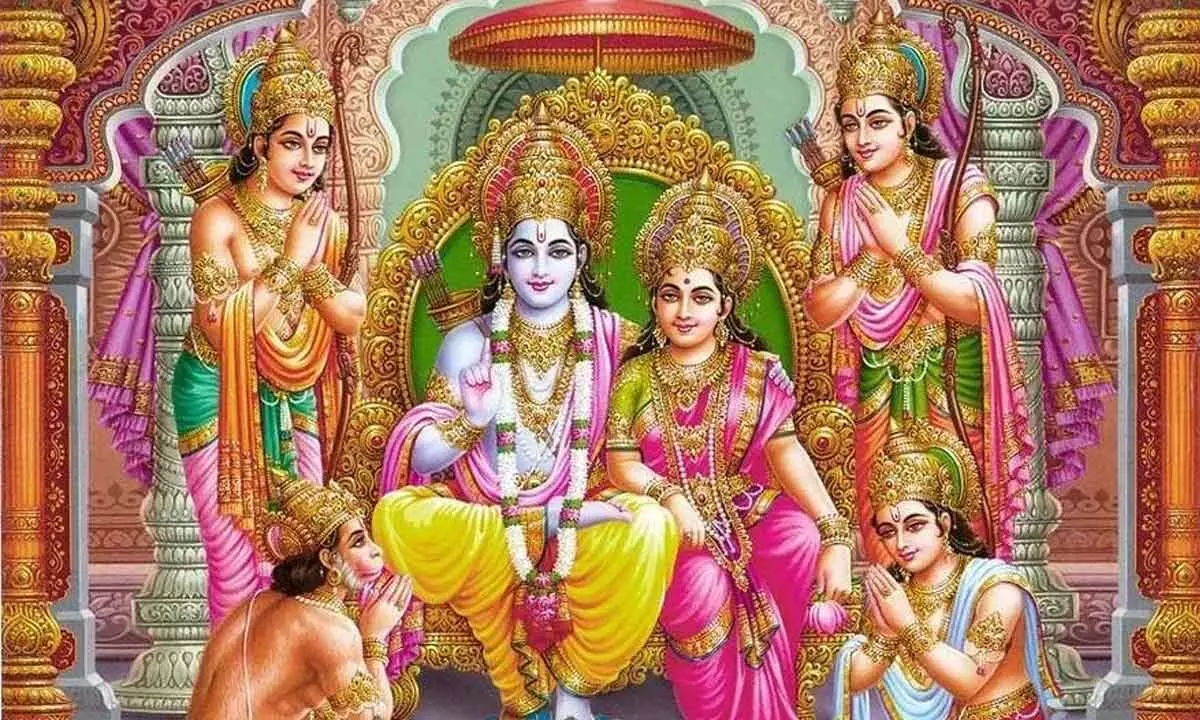Valmiki called ‘The Ramayana’ as not merely the story of Rama but the noble story of Sita too. In fact, it is the story of many great people – Lakshmana, Bharata, Hanuman and others who competed with one another in virtuous conduct. It is difficult to say whether Bharata was inferior to Lakshmana in Dharma or whether Hanuman was in any way inferior to others in his devotion and competence.
In fact, at the most crucial moment, he is a game-changer. Rightly, Hanuman enjoys a place in the hearts of the people on par with Rama. A skeptical reader may rightly question whether the value system of Rama’s time can be replicated today.

Value system may change with time, but we have to see how Rama, Sita or others handled the situations with great equanimity, rectitude and propriety in the ethical framework of their time. Let us see some examples. Rama is called ‘maryada-purushottam’, one who does not transgress the boundaries of etiquette.
The word ‘maryada’, means a boundary. We are surprised to see that Rama argues for a long time against Sita accompanying him to the forest. When Sita is too insistent, he observes that he wanted to know the determination of Sita and hence did not agree initially.
While meeting Sugriva, he treats him as the king of the ‘vanaras’ and patiently puts up with all the tests conducted by Sugriva. Sugriva falls at his feet when he knows the power of Rama. Similarly, after the coronation of Vibhishana, he asks Hanuman to take permission from Vibhishana and enter Lanka to convey the message of victory to Sita.
We see that Rama does not throw his weight as the kingmaker. Rama is described as ‘satya-sandha’, which means, one who is always guided by truth, or one who keeps his word in all situations. As per the word of his mother Kaikeyi he had to stay in the jungle and not enter any habitation.
Right from the first night in the forest, Rama, along with Sita stays in the jungle, sleeping even on leaves spread out as bed. He never enters Kishkindha or Lanka even for the coronation of Sugriva or of Vibhishana. A great compliment, known to even the common reader of Ramayana, is ‘vigrahavan dharmah’, which is not from a friend, but from Maricha, his enemy.
Maricha lives as a transformed person till Ravana forces him to assume the form of a golden deer. In his long advice to Ravana, he describes Rama as Dharma personified. Rama gets the admiration of even a demonical person who is his enemy.
Rama too admires the positive qualities of his enemy. He admires the great austerities of Ravana and says that he would have been a fit person to rule the whole world if he did not allow his lust to rule him. His battle with Ravana is prolonged because he repeatedly gives Ravana a chance to repent and give Sita back.
He is not angry even while fighting Ravana. Valmiki writes that as a person who had anger under his control, Rama summoned anger while fighting Ravana. He was too willing to give Ravana a chance to repent.
Hanuman too, in his first encounter with Ravana, compliments him in his own mind. Hanuman is a great judge of character, and rightly assesses that the mild strategies like saama, daana or bheda would not work with Ravana’s team. Valor alone would work, he estimates.
When Vibhishana comes to Rama’s camp, it is Hanuman who makes the right assessment of his motive. Rama accepts it as the right course. Great praise for Rama is from Mandodari, who, in her grief after the fall of Ravana, acknowledges the lustful nature of Ravana and praises the great qualities of Rama.
The most testing moment for Rama is at the time of taking back Sita. Only a mature reader can understand the ethical dilemma of Rama at that time. It turns out to be Sita’s story in this episode.
Rama has done his dharma as a kshatriya and it was the turn of Sita to perform her role as a queen. She has to be accepted by the people of Ayodhya. She asks Lakshmana to prepare a pyre and gets into it saying that the fire god would testify her devotion to Rama.
Just as Rama has the strength to take the hardest decisions, Sita too shows that she can take equally hardest decisions. Even prior to that, we see Sita showing her resolve that Rama alone had to rescue her. She does not accept Hanuman’s suggestion that he would take her to Rama.
She refuses to touch any other person than Rama. We learn lessons from ‘The Ramayana’ and derive moral strength if our focus is not much on the story but more on the ethical dilemmas and the way great people handled them. (The writer is a former DGP, Andhra Pradesh).
Top

Rivaling in Virtue – Recalling

We learn lessons from ‘The Ramayana’ and derive moral strength if our focus is not much on the story but more on the ethical dilemmas and the way great people handled them









